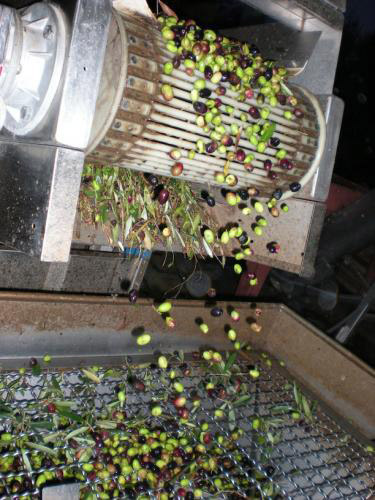Description
Bruzio PDO extra virgin olive oil is obtained from the following olive species: Olea europaea L., Tondina variety; Carolea; Grossa di Cassano; Rossanese. The designation must be followed by one of the following geographical specifications, depending on the production area: Fascia Prepollinica, Valle Crati, Colline Joniche Presilane or Sibaritide.
Production Area
The production and processing area of Bruzio PDO extra virgin olive oil is within several municipalities in the Province of Cosenza, in the Calabria region; it can be bottled or packaged anywhere in the Province of Cosenza.
Production Method
The olives must be harvested between the first ripening of the olives and December 31st or January 15th, depending on the variety. Milling must take place within two days of the harvest. The bottling or packaging processes can take place anywhere within the Province of Cosenza.
Appearance and Flavour
Fascia Prepollinica: obtained from the Tondina (at least 50%), Grossa di Cassano (up to 20%) and Carolea (up to 30%) varieties; it is in green with yellow reflections, and has a mild fruity smell and a fruity flavour. Valle Crati: obtained from the Carolea (at least 50%), Tondina (up to 30%) and Rossanese (up to 20%) varieties; it is greenish-yellow, with a mild fruity smell and a fruity flavour. Colline Joniche Presilane: obtained from Rossanese varieties (at least 70%); it is golden yellow with green reflections, and has a delicate fruity smell and a fruity flavour with aromas of sweet almond. Sibartide: obtained from the Grossa di Cassano (at least 70%) and Tondina (up to 30%) varieties; it is yellow with green reflections, and has a light fruity smell and a fruity flavour with a touch of bitterness.
History
The origins of Bruzio PDO extra virgin olive oil date back to the Magna Graecia period, when olive cultivation was introduced to Cosenza. It developed steadily over the following centuries, eventually becoming an important part of the local agricultural economy.
Gastronomy
Extra virgin olive oil is highly perishable and must be kept in a cool, dark place at a temperature between 14 and 18 °C, away from sources of heat, light and other foods which produce odours. It should be consumed within 4-6 months of pressing to fully appreciate its flavour. Thanks to its delicate aromatic flavour, Bruzio PDO extra virgin olive oil is particularly suitable for dressing steamed vegetables, grilled fish and salads, as well as for using in traditional Calabrian pasta dishes.
Marketing
The product is marketed as Bruzio PDO extra virgin olive oil, followed by one of the following additional specifications: Fascia Prepollinica, Valle Crati, Colline Joniche Presilane, or Sibaritide. It is sold in glass or tin plate recipients of no more than 5 litres. The label must bear the indication Bruzio, followed by the wording Protected Designation of Origin (PDO), reference to the sub-area, the European symbol and the harvest year of the olives. The specific guarantee mark, which consists of a unique alphanumeric code that ensures the traceability of the product, must be on the packaging.
Distinctive Features
Bruzio PDO extra virgin olive oil has a maximum acidity of between 0.7 and 0.8 g per 100 g of oil, depending on the additional specification, a panel test result that is more than or equal to 6.5 and a polyphenol level of at least 150 ppm or 200 ppm, depending on the olive variety used.













